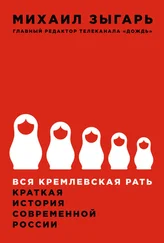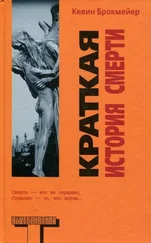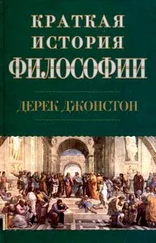LW 36: 92.
«И сказал Бог: сотворим человека по образу Нашему и по подобию Нашему, и да владычествуют они над рыбами морскими, и над птицами небесными, и над скотом, и над всею землею, и над всеми гадами, пресмыкающимися по земле. И сотворил Бог человека по образу Своему, по образу Божию сотворил его; мужчину и женщину сотворил их. И благословил их Бог, и сказал им Бог: плодитесь и размножайтесь, и наполняйте землю, и обладайте ею».
LW 45: 11–49.
S. Hendrix . Luther on Marriage // Lutheran Quarterly 14, no. 3 (2000): 335–350; S. M. Johnson . Luther’s Reformation and (un)holy matrimony // Journal of Family History 17 (1992): 271–288; E. J. Carlson . Marriage and the English Reformation. Oxford: Clarendon Press, 1994; J. F. Harrington . Reordering Marriage and Society in Reformation Germany. Cambridge: Cambridge University Press, 1995; S. Ozment . Flesh and Spirit: Private Life in Early Modern Germany. New York: Viking, 1999.
М. Лютер. О состоянии супружества (1522); LW 45: 18; P. Melanchthon . Apology of the Augsburg Confession, ‘The Marriage of Priests, article 23 // R. Kolb and T. Wengert (eds.). The Book of Concord: The Confessions of the Evangelical Lutheran Church (Minneapolis, MN: Fortress Press, 2000), pp. 247–260.
LW 39.290–291.
D. MacCulloch . Reformation: Europe’s House Divided 1490–1700. London: Penguin, 2004, p. 647. Наиболее удачный анализ восприятия женщин в Европе эпохи Возрождения и Реформации см.: C. Jordan . Renaissance Feminism: Literary Texts and Politics Models. Ithaca, N. Y.: Cornell University Press, 1990; P. J. Benson . The Invention of the Renaissance Woman. Pittsburgh: Penn State University Press, 1992; I. Maclean . The Renaissance Notion of Woman. Cambridge: Cambridge University Press, 1980; E. Rummel . Erasmus on Women. Toronto and London: University of Toronto Press, 1996; J. L. Klein (ed.). Daughters, Wives and Widows: Writings by Men about Women and Marriage in England 1500–1640. Urbana: University of Illinois Press, 1992; S. W. Hull . Women According to Men. Thousand-Oaks, CA, and London: AltaMira Press, 1996.
S. Ozment . Age of Reform 1250–1550: An intellectual and Religious History. New Haven, CT: Yale University Press, 1981, p. 381; Witte . From Sacrament to Contract, p. 42ff.
R. H. Bainton . Here I Stand: A Life of Martin Luther. Peabody, MA: Hendrickson, 2009, p. 233.
Это положение детально развил Картер Линдберг. Он предположил, что лютеранское богословие требовало развития новых общественных и законодательных структур для движения к процветанию. Социальная этика считалась продолжением почитания самого сообщества верующих, но это чувство общественного долга явно прослеживалось и в изменении статуса семьи и брака в реформационной Германии. См.: C. Lindberg . Beyond Charity: Reformation Initiatives for the Poor. Minneapolis, MN: Fortress Press, 1993.
См.: Книга согласия. Вероисповедание и учение лютеранской церкви / Пер. К. Комарова; ред. А. Комарова. СПб.: Лютеранское наследие, 1998; Лютер М. Большой катехизис. СПб.: Лютеранское наследие, 2013. 150 с.; Лютер М. Краткий катехизис. СПб.: Лютеранское наследие, 1994 (1-е изд,), 2014 (стереотипное изд.).
LW 45: 46.
Стивен Озмент (Steven Ozment, р. 1939) – американский историк Германии и особенно Реформации, профессор Гарвардского университета, автор более десяти монографий, в том числе: The Age of Reform, 1250–1550: An Intellectual and Religious History of Late Medieval and Reformation Europe. New Haven, CT: Yale University Press, 1980; 1981.
S. Ozment . When Fathers Ruled: Family Life in Reformation Europe. Cambridge, MA: Harvard University Press, 1985; M. Wiesner-Hanks . Luther and Women: The death of two Marys // J. Obelkevich, L. Roper and R. Samuel (eds.). Disciplines of Faith: Studies in Religion, Politics and Patriarchy. London and New York: Routledge, 1987; M. Weisner-Hanks . Women and Gender in Early Modern Europe, 2nd (ed.). Cambridge: Cambridge University Press, 2000; L. Roper . The Holy Household: Women and Morals in Reformation Augsburg. Oxford: Oxford University Press, 1989; L. Roper. “The Common Man”, “The Common Good”, “Common Women”: Gender and meaning in the German Reformation Commune // Social History 12 (1987): 1–21; L. Shorn-Schutte . Gefartin und Mitregentin: Zur Sozialgeschichte der evangelischen Pfarrfrau in der Fruhen Neuzeit // H. Wunder and C. Wanja (eds.). Wandel der Geschlechterbeziehungen zu Beginn der Neuzeit. Berlin: Suhrkamp Verlag, 1990.
Подробное обсуждение этих вопросов можно найти в: Roper . “The Common Man”; S. Karant-Nunn . Continuity and Change: Some effects of the Reformation on the Women of Zwickau // Sixteenth Century Journal 13 (1982): 17–42; S. Karant-Nunn . The Reformation of Women // R. Bridenthal, S. M. Stuard, M. E. Wiesner-Hanks, Becoming Visible: Women in European History. Boston: Houghton Mifflin, 1998, pp. 175–202; H. Wunder . He is the Sun, She is the Moon: Women in Early Modern Germany. Сambridge: Cambridge University Press, 1988.
Ozment . When Fathers Ruled, pp. 10–23; J. D. Douglass . Women and the Continental Reformation // R. R. Ruether, Religion and Sexism: Images of Woman in the Jewish and Christian Traditions. New York: Simon and Schuster, 1974, passim.
M. E. Wiesner . Nuns, Wives and Mothers: Women and the Reformation in Germany // S. Marshall (ed.). Women in Reformation and Counter-Reformation Europe: Public and Private Worlds. Bloomington: Indiana University Press, 1989, p. 26.
Roper. The Holy Household.
U. Strasser . State of Virginity: Gender, Religion, and Politics in an Early Modern Catholic State. Ann Arbor: University of Michigan Press, 2004, p. 120; U. Strasser . Bones of Contention: Cloistered Nuns, Decorated Relics, and the Contest over Women’s Place in the Public Sphere of Counter-Reformation Munich // Archiv für Reformationsgeschichte 90 (1999): 255–288.
Читать дальше
![Хелен Пэриш Краткая история: Реформация [litres] обложка книги](/books/389963/helen-perish-kratkaya-istoriya-reformaciya-litres-cover.webp)
![Юваль Ной Харари - Sapiens. Краткая история человечества [litres]](/books/34310/yuval-noj-harari-sapiens-kratkaya-istoriya-cheloveche-thumb.webp)




![Джон Херст - Краткая история Европы [litres]](/books/389962/dzhon-herst-kratkaya-istoriya-evropy-litres-thumb.webp)
![Пол Стретерн - Расцвет и падение [Краткая история 10 великих империй] [litres]](/books/390297/pol-stretern-rascvet-i-padenie-kratkaya-istoriya-10-thumb.webp)
![Джон Норвич - Краткая история Франции [litres]](/books/400778/dzhon-norvich-kratkaya-istoriya-francii-litres-thumb.webp)
![Уильям Байнум - Краткая история науки [litres]](/books/412489/uilyam-bajnum-kratkaya-istoriya-nauki-litres-thumb.webp)
![Стивен Хокинг - Краткая история времени. От Большого взрыва до черных дыр [litres]](/books/416997/stiven-hoking-kratkaya-istoriya-vremeni-ot-bolshogo-thumb.webp)
![Мартин Буркхардт - Краткая история цифровизации [litres]](/books/435614/martin-burkhardt-kratkaya-istoriya-cifrovizacii-lit-thumb.webp)
